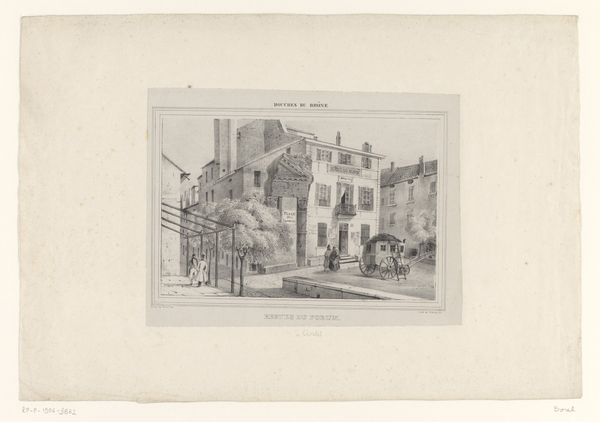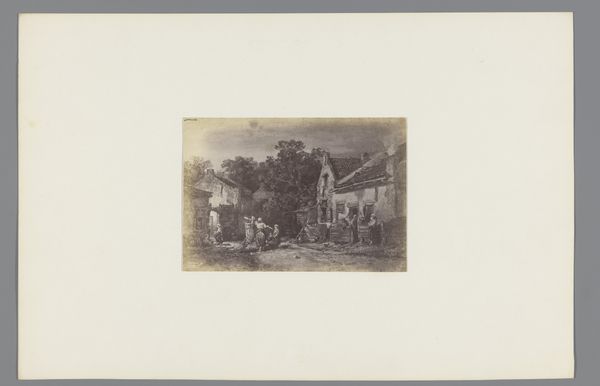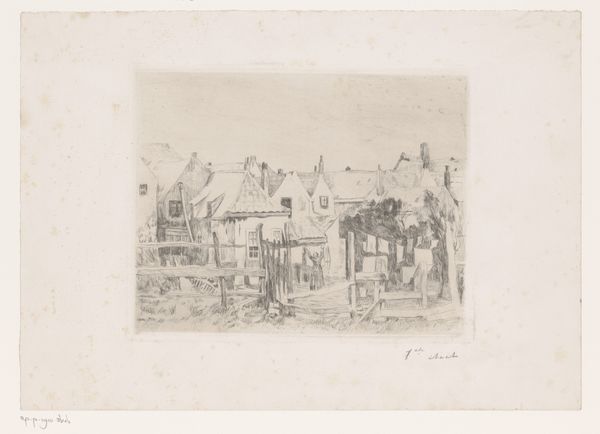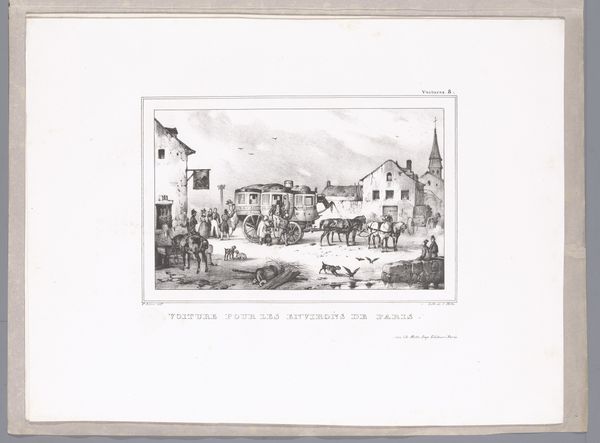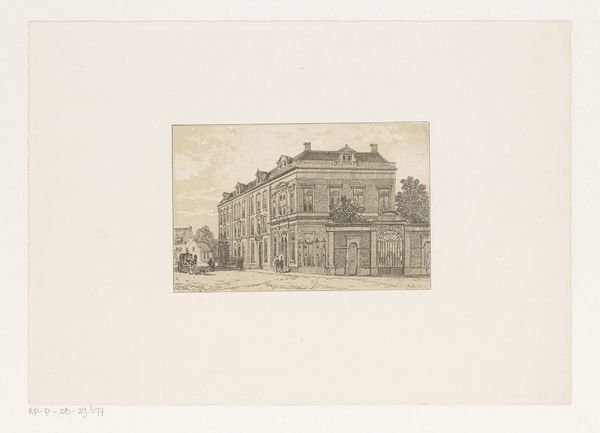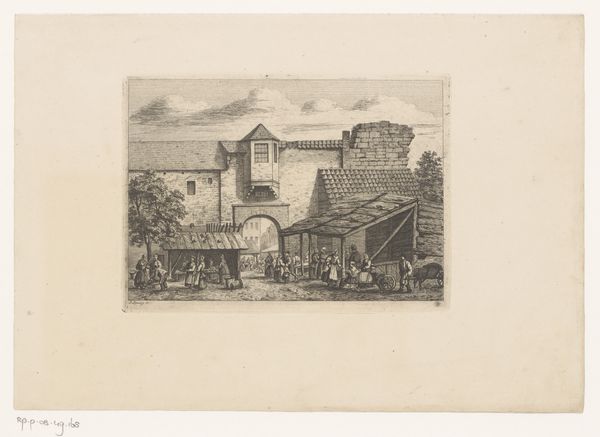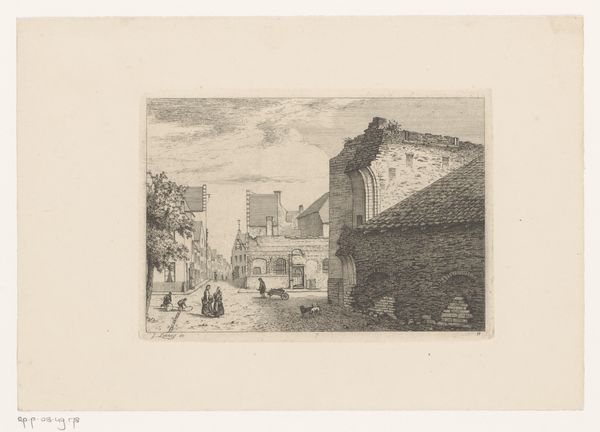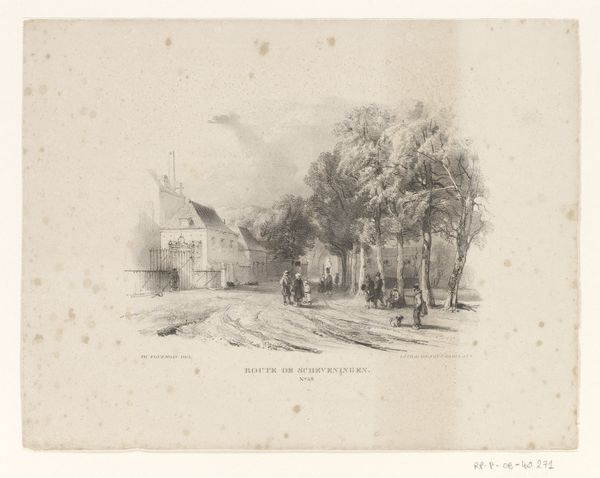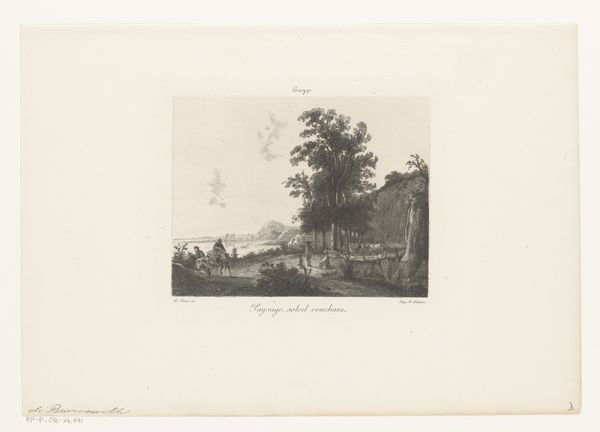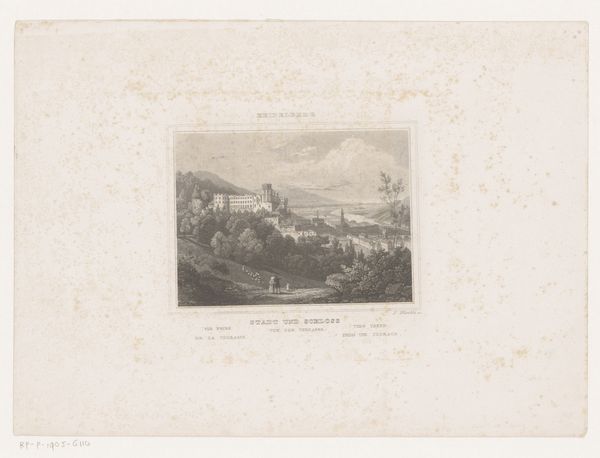
drawing, print, etching, paper
#
drawing
# print
#
etching
#
etching
#
paper
#
cityscape
#
realism
Dimensions: height 188 mm, width 267 mm
Copyright: Rijks Museum: Open Domain
Editor: So, here we have Maximilien René Radiguet’s etching from 1841, “Gezicht op de Rue de Cayenne”, or "View of Cayenne Street.” The crisp lines and high contrast give it an almost photographic feel, though it’s clearly a rendering. It feels very documentary, but what can you tell me about it? Curator: This seemingly straightforward cityscape offers a window into the colonial gaze of the 19th century. Radiguet's choice to depict Cayenne, the capital of French Guiana, isn't just about recording a place; it's about asserting a particular European perspective onto a colonized territory. How do you see the depiction of the people in the street? Editor: They seem…incidental. Small, almost like props within the larger scene. Curator: Exactly. Their presence feels subjugated to the architectural structures and the overall composition. Consider the historical context: France's colonial project heavily relied on exploiting resources and labor in places like Cayenne. Doesn't the artist's choice to downplay the human element, to present the scene as primarily a built environment, seem complicit in that power dynamic? Editor: That makes sense. So it’s not just a neutral depiction of a place, but a statement, albeit subtle, about colonial power? Curator: Precisely. Think about whose gaze is prioritized. This etching, consumed primarily by a European audience, reinforces a particular vision of a distant, "exotic" land and the relationship between colonizer and colonized. It's a romanticized, yet controlled, vision that omits the complexities and brutalities of colonial life. Editor: It’s really changed the way I look at it. I see now it's not simply a realistic portrayal but a carefully constructed narrative. Curator: Understanding the underlying social and political forces is key. Art provides invaluable perspectives on the stories we tell about ourselves.
Comments
No comments
Be the first to comment and join the conversation on the ultimate creative platform.

